Fujifilm Fujinon XF 14 mm f/2.8 R
3. Build quality
The photo below presents a direct comparison between the dimensions of the Zeiss 2.8/12 (on the left), the Fujinon 2.8/14 (in the middle) and the Fujinon 1.4/35 (on the right).
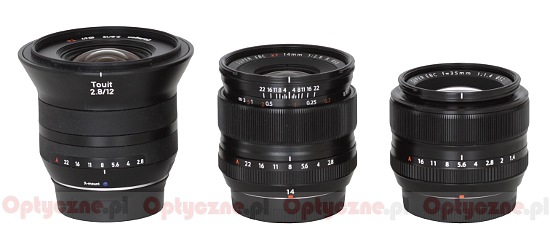 |
Please Support UsIf you enjoy our reviews and articles, and you want us to continue our work please, support our website by donating through PayPal. The funds are going to be used for paying our editorial team, renting servers, and equipping our testing studio; only that way we will be able to continue providing you interesting content for free. |
- - - - - - - - - - - - - - - - - - - - - - - - - - - - - - - - - - - - - - - - - - - - - - - -
The tested lens starts with a metal mount which surrounds contacts and an immobile rear element, 19 mm in diameter. The proper casing is made of metal as well; it begins with a fixed, smooth ring with a red square which makes the alignment with a camera easier, a focal length marking, a serial number and information that the lens was produced in Japan.
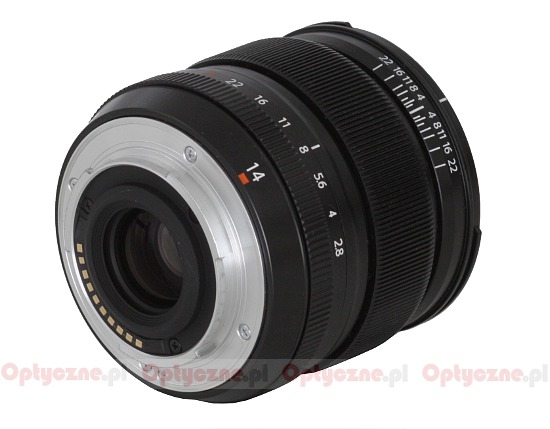 |
The next element is a ribbed aperture ring, 11 mm wide, which works every 1/3 EV step. Its movements are too slack in our opinion – to ensure comfortable work the resistance should have been greater.
After another immobile ring, belonging to the proper casing, you meet a ribbed manual focus ring. It is 17 mm wide and you can move it along a vertical axis. When you shift it close to the front element system you can’t turn it. If you shift it downwards you can see a distance scale, expressed in feet and meters and the ring starts to work in the normal, mechanical mode (with the autofocus switched off). The ring works nicely as it is property damped. Running through the whole distance scale needs a turn through about 110 degrees so you can set the focus with a great precision.
Personally I prefer classic manual focus rings so I enjoy the fact that there are no servo mechanisms here. You must remember, though, that you have to pay a price for their lack in the form of the absence of any distance scale (with the determined depth of field) in the display. Fortunately above the distance scale you get a classic depth of field scale, painted on the lens’s body, including all (!) aperture values it offers.
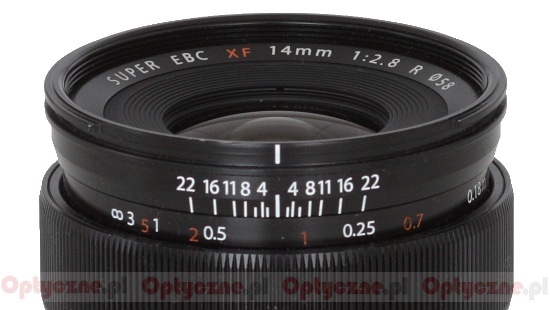 |
It’s worth adding here that the upward-downward movements of the focus ring are very stable, not causing any jumps on the scale. It is a nice change, especially if compared to an analogous solution, offered by the Tokina lenses.
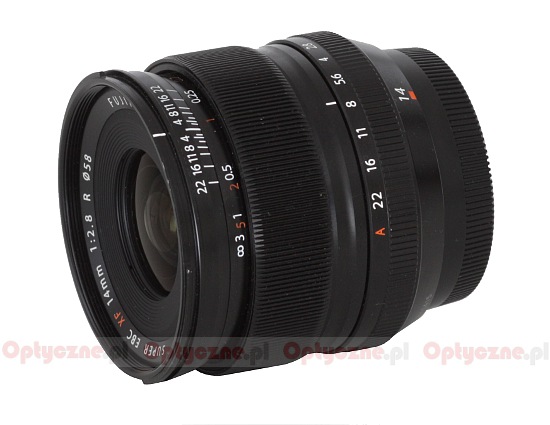 |
Behind the distance scale you can find a hood mount. It features a non-rotating thread on the inside, with a diameter of 58 mm. The thread surrounds an inscription with the names and the parameters of the lens. The front element is immobile, slightly convex and 29 mm in diameter.
The optical construction of the lens consists of 10 elements positioned in 7 groups. You can find among them two aspherical elements and three made of exceptionally low dispersion glass. The aperture diaphragm is made of seven rounded blades and it can be closed down to a value of f/22.
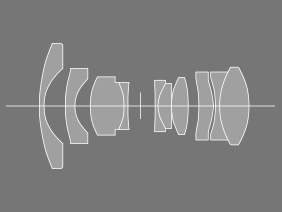 |
Buyers get caps, a hood and a soft pouch in the box.






